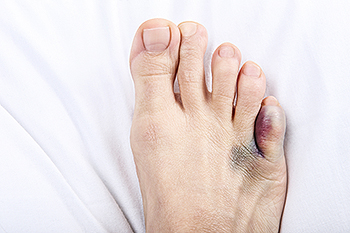
A broken toe, a common injury often overlooked, presents a set of distinct symptoms that warrant attention for prompt diagnosis and care. Persistent pain, swelling, and bruising around the affected toe are primary indicators of a fracture. The injured toe may appear misaligned or take on an unusual shape, signaling structural damage. Limited range of motion and difficulty bearing weight on the foot are common challenges experienced with a broken toe. In some cases, a noticeable snapping or popping sound may accompany the injury, indicating the moment of impact or trauma. If you suspect a broken toe, it is essential to seek medical attention for a thorough examination and possibly imaging studies, such as X-rays. Understanding and recognizing these symptoms can expedite the healing process, ensuring proper care and preventing complications associated with untreated broken toes. If you have broken your toe, it is suggested that you confer with a podiatrist who can confirm the diagnosis and offer correct treatment options.
A broken toe can be very painful and lead to complications if not properly fixed. If you have any concerns about your feet, contact Howard Waxman, DPM from Pleasant Valley Podiatry. Our doctor will treat your foot and ankle needs.
What to Know About a Broken Toe
Although most people try to avoid foot trauma such as banging, stubbing, or dropping heavy objects on their feet, the unfortunate fact is that it is a common occurrence. Given the fact that toes are positioned in front of the feet, they typically sustain the brunt of such trauma. When trauma occurs to a toe, the result can be a painful break (fracture).
Symptoms of a Broken Toe
Generally, it is best to stay off of the injured toe with the affected foot elevated.
Severe toe fractures may be treated with a splint, cast, and in some cases, minor surgery. Due to its position and the pressure it endures with daily activity, future complications can occur if the big toe is not properly treated.
If you have any questions please feel free to contact one of our offices located in Willoughby Hills and Broadview Heights, OH . We offer the newest diagnostic and treatment technologies for all your foot and ankle needs.
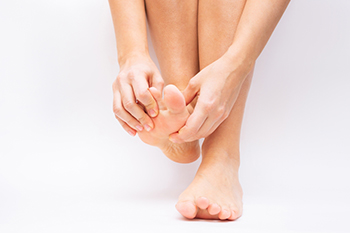
Toe arthritis, a condition causing inflammation in the joints of the toes, has a range of symptoms, offering insight into its presence. Most commonly, individuals experience pain, swelling, and stiffness in the affected toes, often intensifying with movement. As arthritis progresses, the joints may lose flexibility, impeding regular toe movements. A notable sign is the development of a grinding sensation or audible cracking when the affected toes are in motion. The condition can also lead to changes in the toe's appearance, such as deformities or the formation of bunions. As arthritis takes its toll, daily activities, like walking or standing, may become increasingly challenging. Recognizing these subtle yet significant indicators enables individuals to seek timely medical attention. If you have toe pain, it is strongly suggested that you visit a podiatrist who can accurately diagnose toe arthritis and offer appropriate treatment options.
Toe pain can disrupt your daily activities. If you have any concerns, contact Howard Waxman, DPM of Pleasant Valley Podiatry. Our doctor can provide the care you need to keep you pain-free and on your feet.
What Causes Toe Pain?
Most severe toe pain is caused due to a sports injury, trauma from dropping something heavy on the toe, or bumping into something rigid. Other problems can develop over time for various reasons.
Toe pain can be caused by one or more ailments. The most common include:
When to See a Podiatrist
Diagnosis
In many cases the cause of toe pain is obvious, but in others, a podiatrist may want to use more advanced methods to determine the problem. These can range from simple visual inspections and sensation tests to X-rays and MRI scans. Prior medical history, family medical history, and any recent physical traumatic events will all be taken into consideration for a proper diagnosis.
Treatment
Treatments for toe pain and injuries vary and may include shoe inserts, padding, taping, medicines, injections, and in some cases, surgery. If you believe that you have broken a toe, please see a podiatrist as soon as possible.
If you have any questions please feel free to contact one of our offices located in Willoughby Hills and Broadview Heights, OH . We offer the newest diagnostic tools and technology to treat your foot and ankle needs.
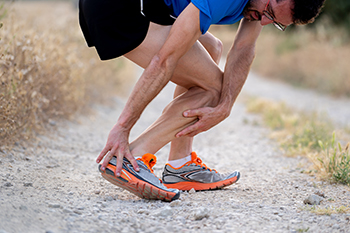
Running, a dynamic and invigorating exercise, offers a multitude of physical benefits. However, the repetitive impact of this activity can also lead to potential injuries if not approached with caution. Prevention of running injuries becomes paramount, and a holistic strategy is key to ensuring runners can continue to enjoy their passion without setbacks. Consistent warm-up routines, including dynamic stretches, prepare muscles and joints for the demands of running, reducing the risk of strains. Wearing appropriate footwear that provides ample support and cushioning is essential in maintaining optimal biomechanics during each stride. Gradual progression in training intensity and distance allows the body to adapt, minimizing the risk of overuse injuries. Incorporating cross training activities and strength exercises helps balance muscle development and enhances overall endurance. Active recovery, including stretching and cool-down exercises, is equally vital in preventing stiffness and promoting flexibility. If you have sustained an injury from running, it is suggested that you schedule an appointment with a podiatrist.
All runners should take extra precaution when trying to avoid injury. If you have any concerns about your feet, contact Howard Waxman, DPM of Pleasant Valley Podiatry. Our doctor will treat your foot and ankle needs.
How to Prevent Running Injuries
There are a lot of mistakes a runner can make prior to a workout that can induce injury. A lot of athletes tend to overstretch before running, instead of saving those workouts for a post-run routine. Deep lunges and hand-to-toe hamstring pulls should be performed after a workout instead of during a warmup. Another common mistake is jumping into an intense routine before your body is physically prepared for it. You should try to ease your way into long-distance running instead of forcing yourself to rush into it.
More Tips for Preventing Injury
If you have any questions, please feel free to contact one of our offices located in Willoughby Hills and Broadview Heights, OH . We offer the newest diagnostic and treatment technologies for all your foot care needs.
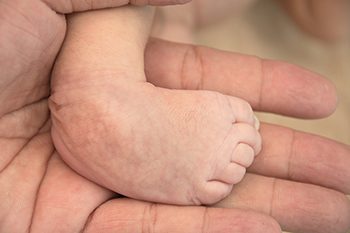
Birth defects, also referred to as congenital anomalies, encompass various conditions, among which clubfoot stands out due to its distinctive features. This condition is characterized by the downward and inward turning of the hind foot and ankle, often coupled with forefoot twisting. Understanding the nuances between the two primary types of clubfoot is essential for effective management. Positional clubfoot, arising from fetal positioning, can be addressed through corrective measures such as immobilization in a cast and physical therapy. On the other hand, true clubfoot represents a structural abnormality involving underdeveloped bones or muscles in the leg or foot. This type of deformity necessitates prompt intervention and, in some cases, requires surgical procedures. Beyond these distinctions, there is an association between clubfoot and Larsen syndrome, a more intricate disorder marked by the coexistence of clubfeet and dislocations in the hips, knees, and elbows. With an understanding of the specific club foot type, a podiatrist is able to make informed decisions regarding the most suitable treatment for your child. It is suggested that you schedule an appointment with this type of doctor to discuss treatment options.
Congenital foot problems require immediate attention to avoid future complications. If you have any concerns, contact Howard Waxman, DPM of Pleasant Valley Podiatry. Our doctor can provide the care you need to keep you pain-free and on your feet.
Congenital foot problems are deformities affecting the feet, toes, and/or ankles that children are born with. Some of these conditions have a genetic cause while others just happen. Some specific foot ailments that children may be born with include clubfeet, polydactyly/macrodactyly, and cleft foot. There are several other foot anomalies that can occur congenitally. What all of these conditions have in common is that a child may experience difficulty walking or performing everyday activities, as well as trouble finding footwear that fits their foot deformity. Some of these conditions are more serious than others. Consulting with a podiatrist as early as possible will help in properly diagnosing a child’s foot condition while getting the necessary treatment underway.
What are Causes of Congenital Foot Problem?
A congenital foot problem is one that happens to a child at birth. These conditions can be caused by a genetic predisposition, developmental or positional abnormalities during gestation, or with no known cause.
What are Symptoms of Congenital Foot Problems?
Symptoms vary by the congenital condition. Symptoms may consist of the following:
Treatment and Prevention
While there is nothing one can do to prevent congenital foot problems, raising awareness and receiving neonatal screenings are important. Early detection by taking your child to a podiatrist leads to the best outcome possible.
If you have any questions please feel free to contact one of our offices located in Willoughby Hills and Broadview Heights, OH . We offer the newest diagnostic tools and technology to treat your foot and ankle needs.
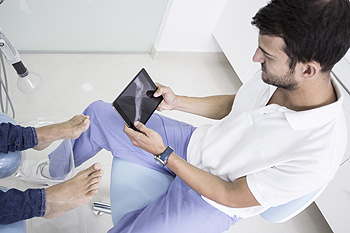
Podiatrists, specialized healthcare professionals, navigate the intricate landscape of foot and ankle care. Tasked with diagnosing, treating, and preventing a spectrum of conditions, their job encompasses addressing issues like foot deformities, injuries, and disorders related to gait. These specialists employ a diverse set of skills, from conducting thorough examinations and interpreting diagnostic tests to formulating personalized treatment plans. Qualifications for aspiring podiatrists involve completing a Doctor of Podiatric Medicine, or DPM degree, typically a four year program, following an undergraduate degree. Subsequently, a multi year residency allows them to refine clinical skills and gain hands-on experience. Podiatrists must be licensed to practice, meeting the requirements stipulated by each state. Individuals who have foot or ankle issues for any reason should contact a podiatrist who can offer the correct treatment method.
If you are dealing with pain in your feet and ankles, you may want to seek help from a podiatrist. Feel free to contact Howard Waxman, DPM from Pleasant Valley Podiatry. Our doctor can provide the care you need to keep you pain-free and on your feet.
What Is a Podiatrist?
A podiatrist is a doctor of podiatric medicine who diagnoses and treats conditions of the foot, ankle, and related structures of the leg. Your podiatrist may specialize in a certain field such as sports medicine, wound care, pediatrics, and diabetic care. Podiatrists have the ability to become board certified through training, clinical experience, and then taking an exam.
What Do Podiatrists Do?
On a daily basis, a podiatrist may perform the following activities:
It is very important that you take care of your feet. It’s easy to take having healthy feet for granted, however foot problems tend to be among the most common health conditions. Podiatrists can help diagnose and treat a variety of feet related conditions, so it is crucial that you visit one if you need assistance.
If you have any questions please feel free to contact one of our offices located in Willoughby Hills and Broadview Heights, OH . We offer the newest diagnostic and treatment technologies for all your foot and ankle needs.